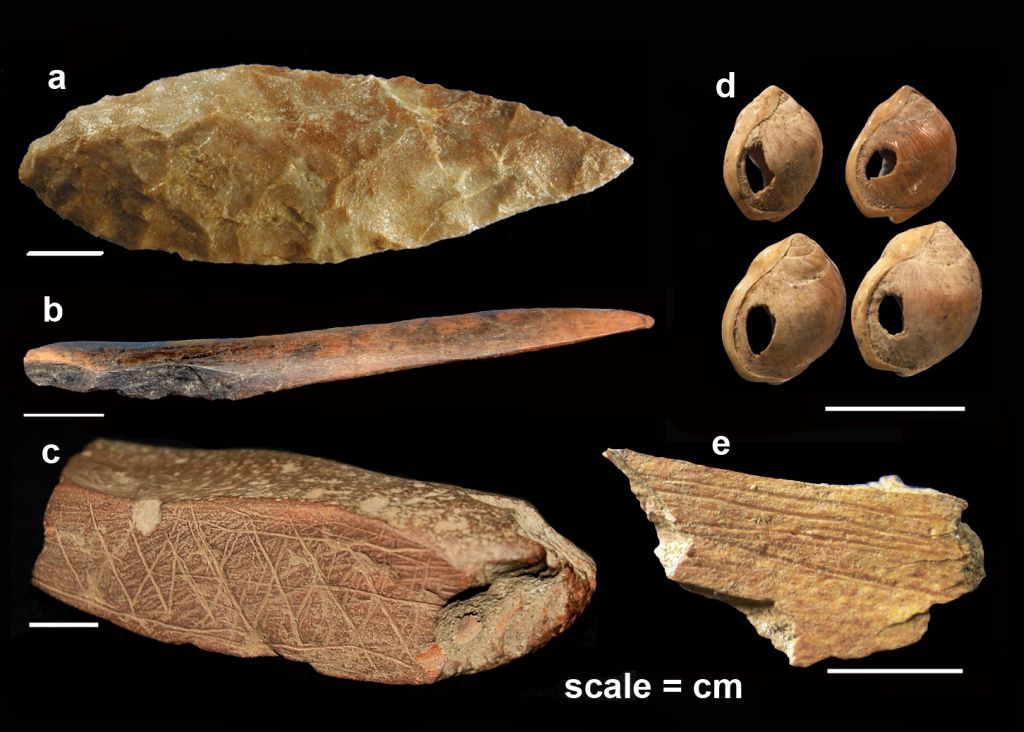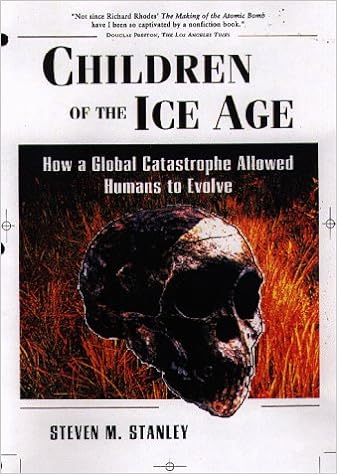In a previous thread, I had sketched the evolution of our human ancestors till Homo erectus, the first species of our genus to colonize Asia and Europe. I hope to continue the scientific narrative for modern humans.
The Science of Human Evolution
The modern humans slowly evolve from descendents of H. ergaster is East Africa from 200,000 years ago onwards.
Evolution of Modern Humans: Early Modern Homo sapiens
By 120,000 years they extend their range to South Africa and by 100,000 years they had expanded into Middle East. Thus begins a period of slow expansion into parts of Asia where they parially interbreed with Neanderthals (in Middle East) and denisovians in China. But their presence at this stage in Europe and Asia was quite small and they coexistence with other human groups like Neanderthals. The main migration event out of Africa occurs at around 60,000 years ago and is accompanied by large population growth and new technologies. Today most humans outside of Africa can trace 95% of their genetic heritage from this migration that occured at 55,000 years.
http://www.sciencemag.org/news/2016...-trace-back-single-migration-more-50000-years
They conclude that, like most other living Eurasians, Aborigines descend from a single group of modern humans who swept out of Africa 50,000 to 60,000 years ago and then spread in different directions. The papers “are really important,” says population geneticist Joshua Akey of the University of Washington, Seattle, offering powerful testimony that “the vast majority of non-Africans [alive today] trace their ancestry back to a single out-of-Africa event.”
They find that a wetter climate and lower sea levels could have enticed humans to cross from Africa into the Arabian Peninsula and the Middle East during four periods, roughly around 100,000, 80,000, 55,000, and 37,000 years ago. “I’m very happy,” Petraglia says. His and others’ discoveries of early stone tools in India and Arabia suggest that moderns did expand out of Africa during the early migration windows. But those lineages mostly died out. The major migration, with more people and reaching all the way to Australia, came later. “Demographically, after 60,000 years ago something happens, with larger waves of moderns across Eurasia,” Petraglia says. “All three papers agree with that.”
I hope to provide the key evidence that helps scientists to put together the picture of how modern humans replaced all other human species on the planet and became as successful as they are today.
The Science of Human Evolution
The modern humans slowly evolve from descendents of H. ergaster is East Africa from 200,000 years ago onwards.
Evolution of Modern Humans: Early Modern Homo sapiens
By 120,000 years they extend their range to South Africa and by 100,000 years they had expanded into Middle East. Thus begins a period of slow expansion into parts of Asia where they parially interbreed with Neanderthals (in Middle East) and denisovians in China. But their presence at this stage in Europe and Asia was quite small and they coexistence with other human groups like Neanderthals. The main migration event out of Africa occurs at around 60,000 years ago and is accompanied by large population growth and new technologies. Today most humans outside of Africa can trace 95% of their genetic heritage from this migration that occured at 55,000 years.
http://www.sciencemag.org/news/2016...-trace-back-single-migration-more-50000-years
They conclude that, like most other living Eurasians, Aborigines descend from a single group of modern humans who swept out of Africa 50,000 to 60,000 years ago and then spread in different directions. The papers “are really important,” says population geneticist Joshua Akey of the University of Washington, Seattle, offering powerful testimony that “the vast majority of non-Africans [alive today] trace their ancestry back to a single out-of-Africa event.”
They find that a wetter climate and lower sea levels could have enticed humans to cross from Africa into the Arabian Peninsula and the Middle East during four periods, roughly around 100,000, 80,000, 55,000, and 37,000 years ago. “I’m very happy,” Petraglia says. His and others’ discoveries of early stone tools in India and Arabia suggest that moderns did expand out of Africa during the early migration windows. But those lineages mostly died out. The major migration, with more people and reaching all the way to Australia, came later. “Demographically, after 60,000 years ago something happens, with larger waves of moderns across Eurasia,” Petraglia says. “All three papers agree with that.”
I hope to provide the key evidence that helps scientists to put together the picture of how modern humans replaced all other human species on the planet and became as successful as they are today.


